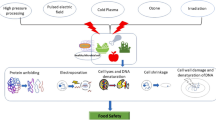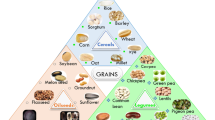Abstract
The application of vacuum-microwave drying can dramatically decrease drying times in comparison to conventional kiln drying. Instead of thermal energy for the conventional drying, electric energy is used for heating the material in microwave drying. To investigate the energy efficiency specimens of beech, maple and spruce wood were dried in a semi-industrial and a laboratory vacuum-microwave kiln. Both allowed measurement of the energy consumption during the process. In addition, a continuous monitoring of the weight loss was possible in the laboratory kiln. In the first experiments energy input was controlled manually. To avoid material degradation the process was controlled by measurement of wood surface temperature in further experiments. Energy efficiencies of up to 80% were reached depending on the moisture content of the samples and wood species. Drying rates depended additionally on mass specific energy input. For beech drying rates between 1.0 and 4.5%/min were reached. The period of fairly constant drying rate extended to values below the fibre saturation point. The wood was in most cases free of checks and always free of colour changes because of the short process duration and the absence of oxygen.
Zusammenfassung
Die Anwendung der Vakuum-Mikrowellentrocknung kann im Vergleich zur konventionellen Kammertrocknung die Trocknungszeiten dramatisch verkürzen. Im Gegensatz zum Einsatz von thermischer Energie bei konventioneller Trocknung wird bei der Mikrowellentrocknung elektrische Energie zur Materialerwärmung genutzt. Buche-, Ahorn- und Fichteproben wurden in einer Technikumsanlage und in einer Laboranlage getrocknet, um den energetischen Wirkungsgrad zu untersuchen. An beiden Anlagen war die Messung des Energieverbrauchs während des Prozesses möglich. Die Laboranlage ermöglichte zusätzlich eine kontinuierliche Messung des Masseverlustes der Proben. In den ersten Versuchen erfolgte die Steuerung des Energieeintrags manuell. Um Materialschäden zu vermeiden, wurde der Prozess in den weiteren Versuchen mittels einer Oberflächentemperaturmessung kontrolliert. Abhängig von der Anfangsfeuchte und Holzart wurden energetische Wirkungsgrade bis zu 80% erreicht. Die Trocknungsgeschwindigkeiten waren zusätzlich vom massespezifischen Energieeintrag abhängig. Für Buche wurden Trocknungsgeschwindigkeiten von 1,0 bis 4,5%/min erreicht. Die Periode annähernd konstanter Trocknungsgeschwindigkeit reicht bis zu Werten unterhalb des Fasersättigungspunktes. Das Holz konnte in den meisten Fällen rissfrei getrocknet werden. Aufgrund der kurzen Prozesszeiten und des Mangels an Sauerstoff in der Trockneratmosphäre traten keine Materialverfärbungen auf.






Similar content being viewed by others
References
Antti L (1999) Heating and drying wood using microwave power. Doctoral Thesis, Luleå University of Technology
Barnes D, Admiraal L, Pike R, Mathur V (1976) Continuous system for the drying of lumber with microwave energy. Forest Prod J 26(5):31–42
Cividini R, Travan I (2003) Microwave heating in vacuum-press drying of timber: practical investigation. In: Proceedings of 8th International IUFRO Wood Drying Conference, pp 150–155
Egner K, Jagfeld P (1964) Versuche zur künstlichen Trocknung von Holz durch Mikrowellen. Holz-Zentralblatt 129:297–300
Gefahrt J (1967) Hochfrequenz-Wärme in der Holztrocknung. Moderne Holzverarbeitung 5:304–308
Lee N-H, Jung H-S (2000) Comparison of shrinkage, checking, and absorbed energy in impact bending of Korean ash squares dried by a radio-frequency/vacuum process and a conventional kiln. Forest Prod J 50(2):69–72
Resch H (1968) Microwaves for the drying of wood products. Holz Roh- Werkstoff 26:317–324
Seyfarth R (2003) Final project report—Senkung des Elektroenergieverbrauchs für die Schnittholztrocknung im Sägewerk Fa. Heidrich als Musterbeispiel für weitere KMU’s der holzverarbeitenden Industrie. DBU-Project 15558
Seyfarth R, Leiker M, Mollekopf N (2003) Continuous drying of lumber in a microwave vacuum kiln. In: Proceedings of 8th International IUFRO Wood Drying Conference, pp 159–163
Stephen JL, Holmquest HJ (1936) Drying lumber with high frequency electric fields. Wood Prod 41(10):10–12
Torgovnikov G (1996) Practical microwave utilisation. In: High frequency energy to dry wood. Wood Sci Digest No. 59
Acknowledgements
The authors would like to thank the companies Püschner MikrowellenEnergietechnik and ZIFRU Zittauer Fruchtveredelungs GmbH for providing the equipment for vacuum microwave drying and Deutsch Bundesstiftung Umwelt (German Environmental Foundation) as well as the Nowicki Foundation for financial support.
Author information
Authors and Affiliations
Corresponding author
Rights and permissions
About this article
Cite this article
Leiker, M., Adamska, M.A. Energy efficiency and drying rates during vacuum microwave drying of wood. Holz Roh Werkst 62, 203–208 (2004). https://doi.org/10.1007/s00107-004-0479-9
Published:
Issue Date:
DOI: https://doi.org/10.1007/s00107-004-0479-9




